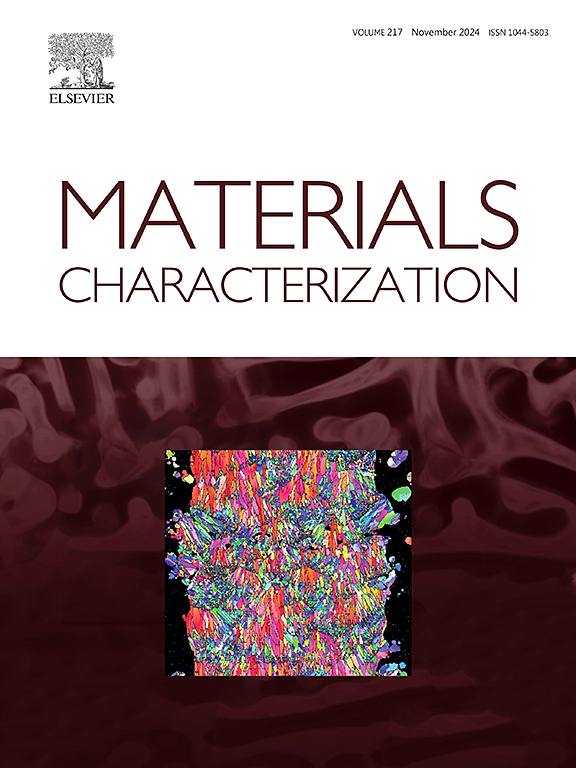SiYBC基改性SiCf/SiC复合材料抗水氧腐蚀性能的提高
IF 4.8
2区 材料科学
Q1 MATERIALS SCIENCE, CHARACTERIZATION & TESTING
引用次数: 0
摘要
为了解决SiCf/SiC复合材料的水氧腐蚀问题,采用化学蒸汽渗透(CVI)与反应熔体渗透(RMI)相结合的方法制备了SiCf/SiC- siybc复合材料。经RMI后,SiCf/SiC-SiYBC复合材料基本达到致密化,密度为2.99 g/cm3,开孔率为3.05 vol%。SiYBC基体由反应区和残余合金组成,主要由B12(C,Si,B)3、YSi2、SiC、Si和YB4组成。讨论了SiYBC基体的形成机理。SiCf/SiC-SiYBC复合材料的抗弯强度和断裂韧性分别为508.3 MPa和26.30 MPa·m1/2,高于其他基体改性陶瓷基复合材料。在1400℃的水氧环境中氧化100 h后,原位形成了硅酸钇,氧化层有效地保护了复合材料,其抗折强度保持率为84.5%。该研究为制备具有优异耐水氧性能的高密度陶瓷基复合材料提供了一条新途径。本文章由计算机程序翻译,如有差异,请以英文原文为准。
Improved water‑oxygen corrosion resistance of SiCf/SiC composites modified with SiYBC matrix
In order to address the water‑oxygen corrosion problem of SiCf/SiC composites, SiCf/SiC-SiYBC composites were fabricated via chemical vapour infiltration (CVI) combined with reactive melt infiltration (RMI) process. After RMI, SiCf/SiC-SiYBC composite basically reaches densification, with the density of 2.99 g/cm3 and open porosity of 3.05 vol%. The SiYBC matrix consists of reaction zones and residual alloy and is mainly composed of B12(C,Si,B)3, YSi2, SiC, Si and YB4. The formation mechanism of SiYBC matrix is discussed. The flexural strength and fracture toughness of SiCf/SiC-SiYBC composite is 508.3 MPa and 26.30 MPa·m1/2 respectively, which is higher than other matrix-modified ceramic matrix composites reported. After oxidation in water‑oxygen environment at 1400 °C for 100 h, yttrium silicate was formed in situ and the oxide layer protected the composite effectively, with the flexural strength retention rate of 84.5 %. This study provides a novel way to product high-density ceramic matrix composites with excellent water‑oxygen resistance.
求助全文
通过发布文献求助,成功后即可免费获取论文全文。
去求助
来源期刊

Materials Characterization
工程技术-材料科学:表征与测试
CiteScore
7.60
自引率
8.50%
发文量
746
审稿时长
36 days
期刊介绍:
Materials Characterization features original articles and state-of-the-art reviews on theoretical and practical aspects of the structure and behaviour of materials.
The Journal focuses on all characterization techniques, including all forms of microscopy (light, electron, acoustic, etc.,) and analysis (especially microanalysis and surface analytical techniques). Developments in both this wide range of techniques and their application to the quantification of the microstructure of materials are essential facets of the Journal.
The Journal provides the Materials Scientist/Engineer with up-to-date information on many types of materials with an underlying theme of explaining the behavior of materials using novel approaches. Materials covered by the journal include:
Metals & Alloys
Ceramics
Nanomaterials
Biomedical materials
Optical materials
Composites
Natural Materials.
 求助内容:
求助内容: 应助结果提醒方式:
应助结果提醒方式:


